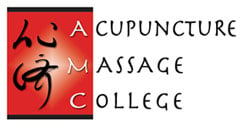 Acupuncture and Chinese Medicine are natural and effective healing systems that have existed for thousands of years. In the last 50 years, practice of these system have spread all over the world, and the growing interest has increased the demand for more acupuncturists. With this demand have come more questions about what exactly acupuncturists do, and specifically what is a day in the life of an acupuncturist like?
Acupuncture and Chinese Medicine are natural and effective healing systems that have existed for thousands of years. In the last 50 years, practice of these system have spread all over the world, and the growing interest has increased the demand for more acupuncturists. With this demand have come more questions about what exactly acupuncturists do, and specifically what is a day in the life of an acupuncturist like?
Acupuncture practice then and now
Back when acupuncture originated, acupuncture practice was passed down from generation to generation. At that time, acupuncturists used stone knives or sharp-edged tools to treat pain and diseases. As the practice progressed, needles made of animal bones, bamboo, gold, and silver were developed. The needles became thinner and thinner, and were sterilized with fire. Later, the theories of acupuncture and Chinese Medicine developed significantly, along with the quality of needles.
Now most acupuncturists use disposable steel needles to treat a variety of conditions, such as pain, anxiety, depression, infertility, and internal medicine diseases. And today, acupuncturists play an integral role in their patients’ health and wellness.
The typical day of an acupuncturist
In many states an acupuncturist is considered a primary care physician. As such, the
acupuncturist typically has several appointments throughout the day in which they meet with patients, ask questions about their medical history, and uncover reasons patients may be stressed or in pain.
During examinations, the acupuncturist assesses the patient’s pulse and looks for other physical clues about his or her health, including:
• Shape, color, and coating of the tongue
• Color and texture of skin
• Posture
• Soft tissue condition
• Nerves
• Blood vessels
The acupuncturist then determines which acupuncture technique will be most effective and sets a course for treatment. In the actual acupuncture treatment, the acupuncturist inserts small needles into the skin at specified areas. For some procedures, the needles are heated, or are combined with electricity to create a mild current. The needles stay in place for 15 minutes to an hour and then are gently removed. Acupuncture procedures may be performed weekly or biweekly, or even annually, depending on the diagnoses and treatment plan.
Other aspects of the acupuncturist’s day include following up with patients, performing administrative tasks, and meeting with healthcare colleagues.
Exciting victories, ongoing passion
One of the many things that keep the day in the life of an acupuncturist exciting is seeing again and again the positive results that come from acupuncture. In just one example experienced at AMC, a patient came to the clinic on crutches. She had been suffering from lower back pain for five weeks and had gone to the emergency room four times. She had thousands of dollars in medical bills, but her pain persisted. However, after five acupuncture treatments, her lower back pain dissipated and she no long needed crutches.
Stories like these are not uncommon, and they are what keep so many acupuncturists excited and passionate about their career.
If this day in the life -- helping others and making a difference -- sounds appealing, take a next step and determine if you have many of the common personality traits we find in students at AMC’s Acupuncture School. And for more information about becoming an acupuncturist, download our free course catalog.


 (305) 595-9500
(305) 595-9500






